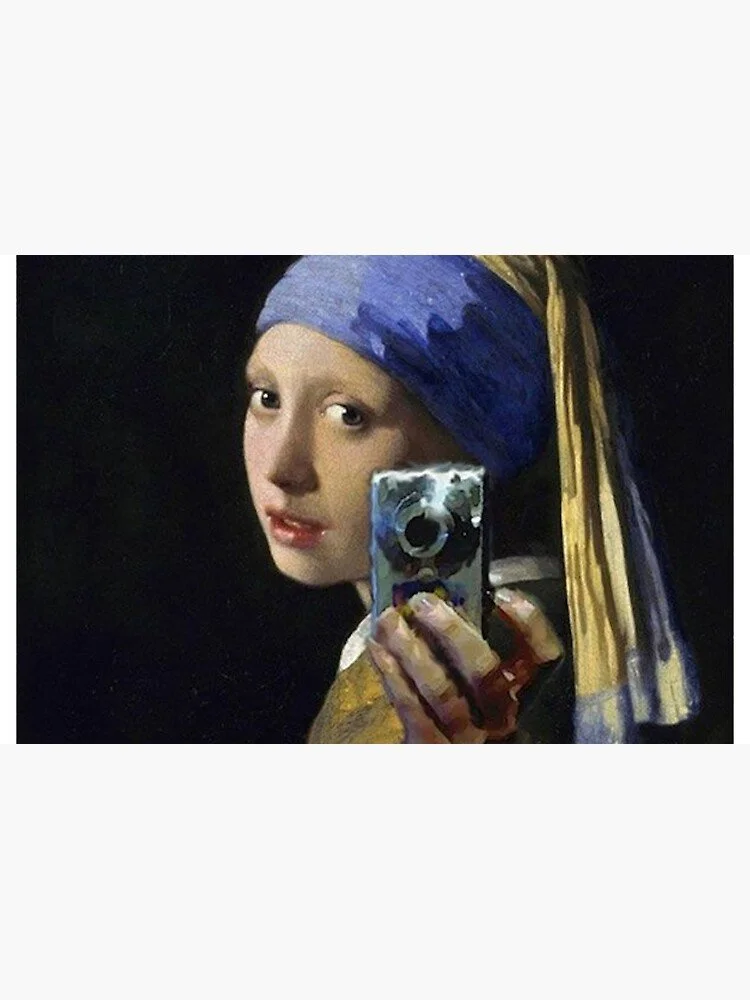“I tell you, my dear, Narcissus was no egoist… he was merely another of us who, in our unshatterable isolation, recognized, on seeing his reflection, the one beautiful comrade, the only inseparable love… poor Narcissus, possibly the only human who was ever honest on this point.”
— Truman Capote
“I am dragged along by a strange new force. Desire and reason are pulling in different directions. I see the right way and approve it, but follow the wrong.”
— Ovid
When I turn on my computer I no longer pine to write. I turn away from the blank white page, press a button, and fall into the well of Narcissus. Everything now exists as an image of myself — smiles in front of meals, lakes, parties, and, worst of all, our art displayed as flattering thumbnails. In a decade during which social media has crawled through culture like something out of Ovid, we have been slowly unlearning how to be human. I worry this is changing how we make art.
My fourties became a slideshow of angled selfies designed to lengthen the jaw, slim the cheek, and flatten a life into a flattering still. Now, in my fifties I am left only with a mirror — how is this right? The “grownups” I remember didn’t give a damn. When I was a girl in downtown New York — La MaMa, Judson Poets Theater, the Ridiculous Theatrical Company — nobody took pictures at parties. Those artists lived in the mess of living: they fell in love, they fought, they failed, and they kept making work. The “normal” was suspect; authentic theater and reckless invention were religion. Offstage, there were no masks. There was attention. Art felt like a process of remembering inside the body, not a portfolio of projects or a list of links.
In Ovid’s story, Echo chases Narcissus and calls, “Let us meet!” He rejects her; she dissolves into the forest, doomed to repeat fragments of everyone else’s words. We usually read this myth as a study of narcissism. But the story is also about the searching artist: Echo is also us. We chase ourselves, our stories, our reflections. Sometimes we are rejected by others, sometimes by our work, and most painfully, sometimes by ourselves. The danger is clear: lose the balance, and the search becomes starvation.
Enter social media: the ultimate static mirror. Its tensionless reflection replaces the mythic push-and-pull that makes art alive. Art asks you to risk failure, to feel messy, to return to the private business of conjuring. Marketing asks you to be familiar, comfortable, and consumable. There’s a difference. Marketing sells a promise. Art offers a wound.
Marketing has a neat little acronym: F.U.D. — Fear, Uncertainty, Doubt. F.U.D. is what social media is built on. Make people afraid they’ll miss out, uncertain if they matter, doubtful that life without this product (or this post) is possible — then watch them perform. For artists, this feedback loop is death. We already carry fear, urgency, and self-doubt; we don’t need an engine that measures our isolation in real time. Views and likes are not substitutes for risk, failure, attention, and the slow labor of practice.
A good trailer teases; it doesn’t spoil. Good marketing invites curiosity. F.U.D., by contrast, is control masquerading as relevance. The code that moves images around the feed is binary: success or failure, visible or invisible. It flattens the hard, nonlinear work of making into a series of polished moments. It rewards sameness, not risk.
Think of the downtown artists who died of AIDS — the lovers, performers, and collaborators I grew up around. We screamed for visibility then because they were erased. They wanted to be seen in truth, not in flattering portraits or curated narratives. Would they post their rage? Or would they ask us why we spend so much time reflecting ourselves instead of making the art they never got to finish?
Technology is not going away. But habit can. If Echo is the nymph calling into a forest of screens, I choose to be the echo of my own voice — imperfect, live, and inconvenient. If I am heard only as a reflection of an image I polished, I’ll still be here, but I’ll be a ghost of my work. I don’t want that. I want to make things that resist being reduced to a thumbnail.
So if you’re an artist, the tiny, subversive act is simple: make more than you post. Risk the private work. Fail more. Read more than you scroll. Let your practice be messy and slow. Keep the mirror as a tool, not a god.
If Narcissus were alive today, he’d get tired of looking at himself. Good — maybe then someone would finally listen to Echo.
— Sarah
